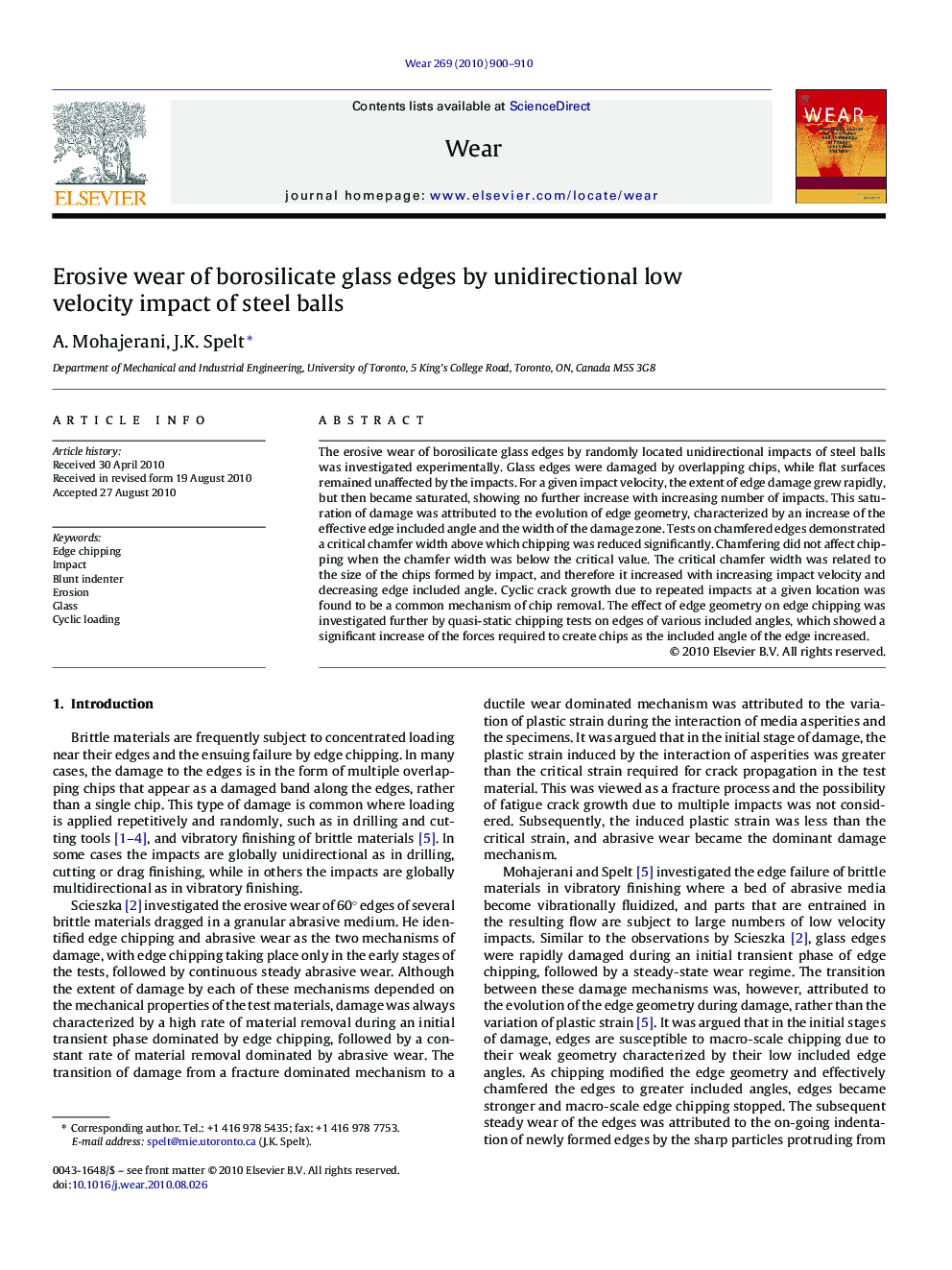| کد مقاله | کد نشریه | سال انتشار | مقاله انگلیسی | نسخه تمام متن |
|---|---|---|---|---|
| 618506 | 1455030 | 2010 | 11 صفحه PDF | دانلود رایگان |

The erosive wear of borosilicate glass edges by randomly located unidirectional impacts of steel balls was investigated experimentally. Glass edges were damaged by overlapping chips, while flat surfaces remained unaffected by the impacts. For a given impact velocity, the extent of edge damage grew rapidly, but then became saturated, showing no further increase with increasing number of impacts. This saturation of damage was attributed to the evolution of edge geometry, characterized by an increase of the effective edge included angle and the width of the damage zone. Tests on chamfered edges demonstrated a critical chamfer width above which chipping was reduced significantly. Chamfering did not affect chipping when the chamfer width was below the critical value. The critical chamfer width was related to the size of the chips formed by impact, and therefore it increased with increasing impact velocity and decreasing edge included angle. Cyclic crack growth due to repeated impacts at a given location was found to be a common mechanism of chip removal. The effect of edge geometry on edge chipping was investigated further by quasi-static chipping tests on edges of various included angles, which showed a significant increase of the forces required to create chips as the included angle of the edge increased.
Research highlights▶ Edges were progressively chipped by blunt impacts, while flat surfaces remained intact. ▶ The extent of edge damage grew rapidly, but then became saturated. ▶ Damage saturation was due to the evolution of the macroscopic edge geometry. ▶ Above a critical chamfer width chipping was reduced significantly.
Journal: Wear - Volume 269, Issues 11–12, 28 October 2010, Pages 900–910